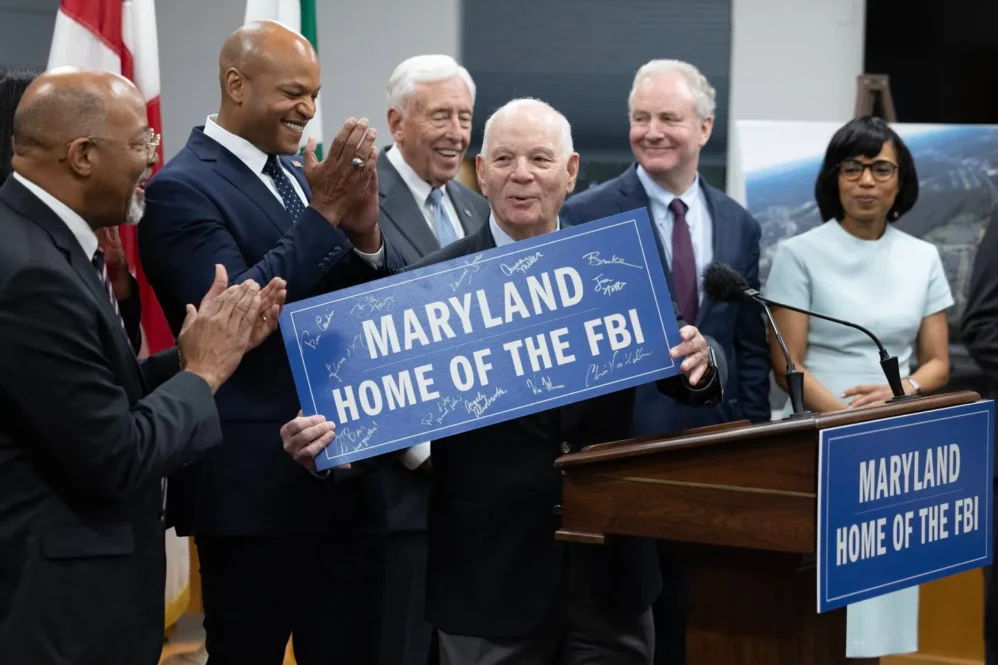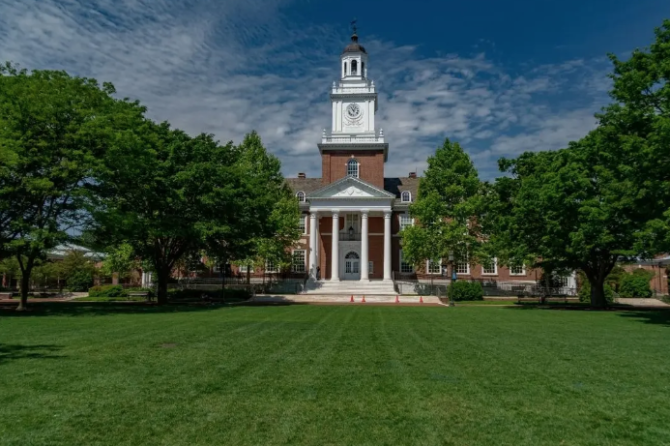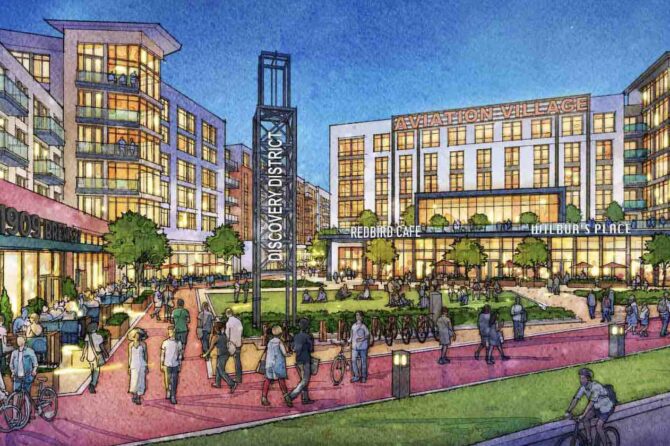BALTIMORE BANNER: Maryland politicians were gleeful when the federal government announced plans to build a new headquarters for the FBI in the Prince George’s County town of Greenbelt.
The decision was the result of a process that stretched more than a decade and pitted Maryland against Virginia for the high-dollar, high-profile project.
As soon as the decision was announced on Nov. 8, backers of the Virginia bid and the director of the FBI himself cried foul. Maryland officials insist they won fair and square and that the decision is “a done deal.”
Here’s the rundown of what’s going on.
Why is the FBI moving?
Since 1974, the FBI has been headquartered at the J. Edgar Hoover Building in Washington, D.C., an aging structure. Maryland officials repeatedly note that there’s netting around the building to protect people on the street from falling debris.
U.S. Rep. Steny Hoyer, the chief champion of bringing the FBI to Maryland,said that FBI leadership came to him back in 2009 to open discussions about funding for a new headquarters.
The Hoover building only houses about half of the FBI’s headquarters workers, and the bureau is seeking to consolidate the operations of the Hoover building and other sites into one campus.
“Fragmentation resulting from FBI HQ’s multiple locations diverts time and resources from investigations, hampers coordination and collaboration, and decreases flexibility,” officials wrote in a 2014 document.
What’s at stake?
The FBI project involves thousands of jobs coming to the new location. Politicians have cited the number as more than 7,500, while some government documents have put the number closer to 11,000.
Some of those workers may choose to live closer to the new headquarters, either in Prince George’s or other Maryland communities, buying homes and paying taxes locally. They’re also expected to make an impact on the local economy in Greenbelt — picking up lunch, filling their gas tanks and running errands on their way to and from work.
On top of that, there will be years of planning and construction work that will employ many workers on a temporary basis.
There’s also a matter of equity and prestige for Prince George’s. Despite being an affluent, majority-Black county, there are relatively fewer federal government agencies located in Prince George’s compared to wealthier counties like Montgomery County in Maryland and Fairfax County in Virginia. The rival bid was in the Fairfax County community of Springfield.
Why was Greenbelt picked?
The U.S. General Services Administration is an independent agency that fulfills the needs of federal government agencies, including their offices. The GSA was in charge of figuring out the best location for the new FBI headquarters.
The lengthy process was put on hold during the Trump administration and restarted in 2022 with three finalists: Landover in Prince George’s County, Greenbelt and Springfield.
The Greenbelt site had several factors working in its favor: It’s adjacent to a Metro stop; the land is owned by Metro and easy to acquire; the project will spur economic growth in an underserved county; and the initial phase of the project had the lowest overall cost.
The Greenbelt proposal did not score as well for proximity to “mission-related locations.” Essentially, Greenbelt lost points because it’s farther from the FBI’s training academy in Quantico, Virginia, than Springfield is.
“I am proud of the process that we ran. I stand behind the decision of our team and of all the public servants who carefully followed that process and selected the site most advantageous to the government,” GSA Administrator Robin Carnahan told lawmakers earlier this month.
Can anything stop the FBI HQ from coming to Maryland?
Maryland officials have repeatedly insisted that the FBI move to Greenbelt is “a done deal” and there’s no legal basis to change the decision.
Opponents seeking to stall or block the move are hoping that the GSA’s own inspector general might align with them. Several members of Congress from Virginia have signed a letter requesting an inspector general investigation into the decision-making process, which they called “a fatally flawed procurement that demands further investigation.”
Their complaints center around the GSA official who made the final call in favor of Greenbelt, coming to a different conclusion than a three-member advisory panel that picked Springfield. The official was a political appointee, they note, while the advisory panel was composed of career bureaucrats from the GSA and the FBI.
Carnahan, the GSA administrator, told lawmakers that the agency’s legal counsel found “no merit” in the complaints about the official who made the final decision on Greenbelt.
The Virginia members of Congress also objected to the fact that the GSA changed how it weighted different factors when it scored the proposals for the three sites.
It’s not clear yet whether the inspector general will investigate. “We have received the request from the members of Congress and take the matter seriously,” said Robert Preiss, a Congressional relations officer for the inspector general, in a statement.
Maryland officials are confident that the choice of Greenbelt will survive any reviews or investigations. “This too shall pass,” U.S. Sen. Ben Cardin wrote in a recent letter to constituents.
“Any new report also will show that Greenbelt was selected, not because of any conflict of interest or interference, but because — quite simply — it was identified as the most advantageous site for the new FBI headquarters — for overall cost to the taxpayers, access to transit and commuter rail, for scheduling certainty, and for equity,” Cardin wrote.
Hoyer said in a recent radio interview that the challenge “is a lot of sound and noise, but I don’t think it’s going to result in any change.”
A lawsuit challenging the decision is also a possibility. Critics of the HQ pick have not indicated if they plan to file a suit.
The FBI headquarters project’s funding could also be subject to political pressures in Congress, which has repeatedly veered close to causing a federal government shutdown over spending disputes.
But Maryland has an advantage in keeping money flowing for the FBI project, with Hoyer and U.S. Sen. Chris Van Hollen holding key positions on each chamber’s Appropriations Committee.
There’s already $1 billion set aside for the project as “a nest egg,” and there’s a proposal to add $375 million more this, according to Van Hollen.
“We need to make sure we fight to keep that there,” Van Hollen said.
The total cost of the project isn’t known — it hasn’t gotten to the point of drawing up plans for the buildings — but will certainly stretch into multiple billions of dollars.










